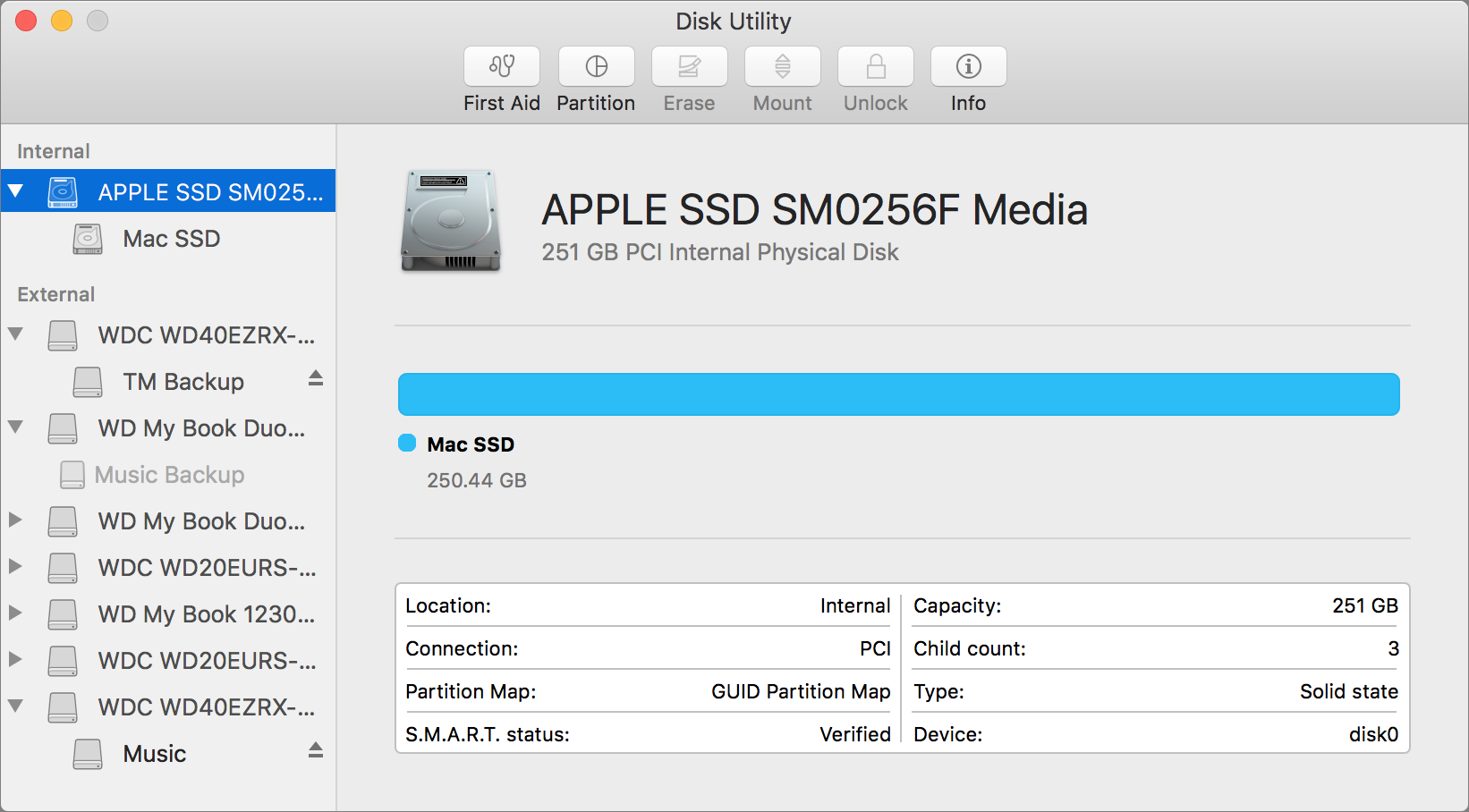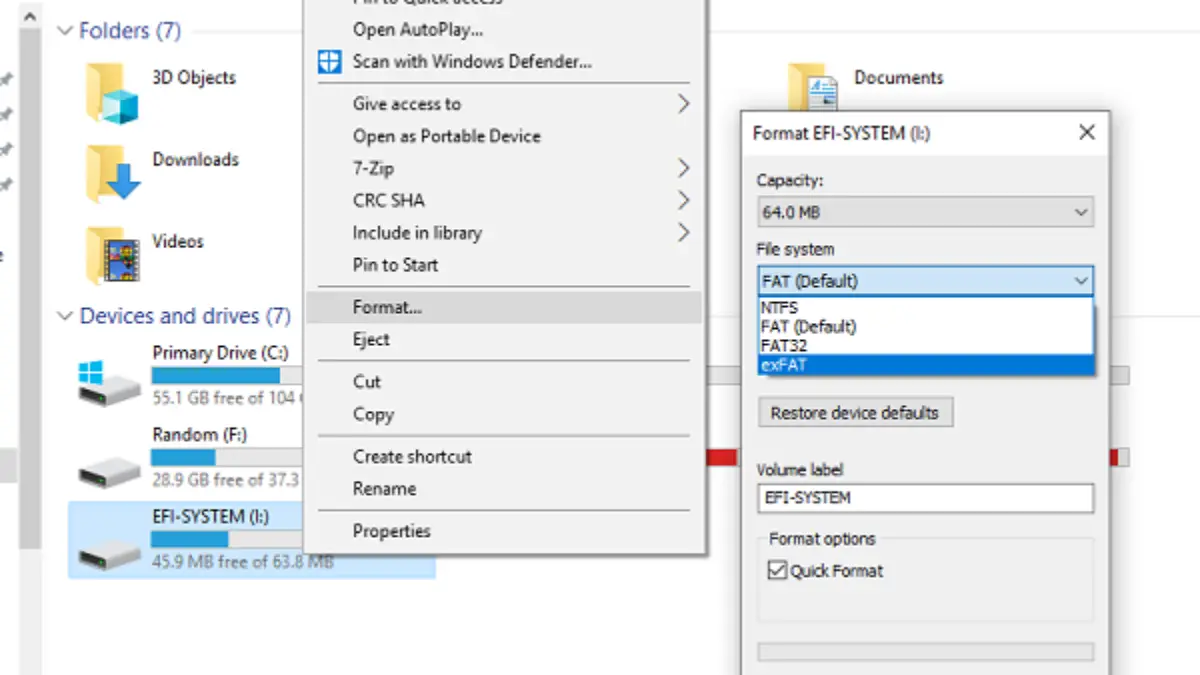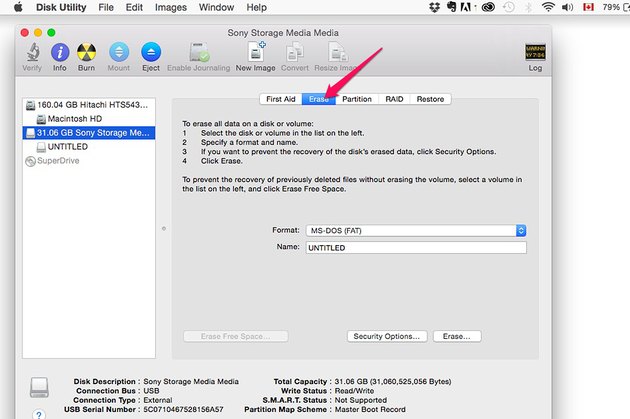To format your USB Flash Drive on a Mac: If you use your USB Flash Drive only on a Mac you will want to reformat it to HFS+ (Mac OS Extended (Journal)) which allows larger file sizes. In your Applications folder there is a folder called 'Utilities'. Here you will find an App called 'Disk Utility'. Open it and you will see something like this. By Jack Scicluna Photography, LLC - guest writer. The latest trend with computers is not including a CD/DVD drive. This helps the computers to be small and lighter. Apple has started doing this when the Macbook Air arrived on the scene. They have also included this with their latest laptops and their iMac’s. Recently photographers have switched from using CD/DVD’s to USB flash drives to.

Dec 16, 2020 • Filed to: Solve Mac Problems • Proven solutions
There are various reasons why people would try to format Mac. Maybe you are selling it or maybe you just want to empty up space. Whatever the reason is, the in-built Disk Utility is the only thing you need to carry out the task. But if you intend to use it afterward, you must gather up some additional information about the Mac file format too.
The biggest decision you have to make before you format Mac is to choose the right file format. Once you pick the right format for your needs, you can move on to how to format a Mac guide. Go through this article and you will know everything you should regarding formatting Mac safely.
Part 1. Overview of Formatting Mac
Formatting means deleting, erasing, or wiping out the existing data from a drive. This is done to make space for new data on the storage media. Formatting means erasing data on a drive while keeping the same format. You must have come across forums where people ask how to format NTFS on Mac. Typically, reformatting involves changing the NTFS or exFAT format to MacOS Extended format or APFS format as they are more compatible with Apple systems.
1. Reasons for Formatting Your Mac
The reasons which lead to formatting the Mac hard drive are listed below:
- When you are giving your Mac away.
- If you want to change the format of the disk such as Windows to Mac format.
- When the drive can't be read by Mac.
- When you are trying to resolve a disk error or working issue which can't be repaired.
- If the macOS installer doesn't see the disk or can't install it properly.
- If the macOS installer states that you can't install the volume as it is a part of Apple RAID.
2. Benefits of Mac Formatting
Despite the reason for formatting, there are various benefits of carrying out the task too. The advantages of formatting the Mac hard drive include:

- It will prevent unexpected system crashes and extend the file of storage media.
- It will improve hard drive performance.
- It will prevent data theft as all the important data is deleted without leaving a trace.
- Formatting also fixes glitches and software conflicts in the system.
When you are about to format Mac hard drive, it is vital that you have a complete understanding of the Mac file system format too.
3. When to Format or Reformat Mac?
Under normal situations, you only format Mac as the intention is to wipe away the data and files from Mac. It is a low-level formatting process that only involves erasing the data on the system. It doesn't overwrite the existing data or remove it completely. The traces of the data are still left even after formatting.
But when you change a file format system of a drive, it is called reformatting. The process is accompanied by the deletion of data on the drive as the format changes, the files saved on the drive becomes irrelevant. As you reformat MacBook Pro or any other version, a partition map is created on the selected drive and an appropriate file system is applied which works with Mac such as OS X Extended (Journaled) file system. It is considered as a high-level formatting process.
So, you only need to decide whether you want to use the drive for other data or simply want to free up space on the drive. Once you understand the difference, it will be easier to decide whether you prefer to reformat Mac or simple formatting.
Part 2. How to Format Mac in 3 Ways?
We have gathered up a list of methods on how to reformat/format Mac without any hassle. You can use any of the listed methods according to your requirements.
1. Reinstall Your Mac OS:
It is very well-known that reinstalling the Operating System deletes every data and setting on the system. Luckily, you can install the Mac OS from the Apple server or the recovery partition in your drive whenever you want. This will format HDD on Mac and you will be able to use it as new.
- Reboot your Mac and while it is starting up the press and hold the Command + R keys until you see the Apple logo on the screen.
- A macOS utility window will pop-up on the screen and you will see several options on the screen. You obviously want to format Mac HDD; therefore, you will have to choose the Disk Utility option first.
- When the Disk Utility window opens up, click on the Erase tab and make sure that the format is compatible with the system. Then hit the Erase button at the bottom and wait while the drive is cleaned.
- Now quit Disk Utility and get back to the OS X utility screen. Click on the Reinstall macOS option and install the OS from the Apple server or a bootable disk you have.
- Enter the Apple ID is required and wait while the OS is reinstalled on your system.
Now, you can set up Mac once again as you want. The main advantage of using this method is that you can wipe the drive securely and restore the original version of macOS from the internet. Plus, you get to install the latest compatible macOS on your system.
2. Erase Mac Hard Drive
When you erase a hard drive, you basically format NTFS on Mac and change the format to a compatible one like AFPS or Mac OS X Extended (Journaled).
- Reboot the Mac and press Command + R keys during startup until you hear a chime. Wait as the OS X utility window appears on the screen.
- Switch to the Erase tab and select the volume which you want to erase. If you have no partition, then select the main hard drive.
- Choose the format as Mac OS Extended (Journaled) and ensure that the GUID Partition Map Scheme is used.
- You can choose whether you want the fastest erase or most secure erase under the Erase Free Space option. Drag the slider according to your preference and hit the Ok button.
- Finally, click on the Erase button and the Disk Utility will erase the entire drive in a while.
When you use this method to format Mac, so are only erasing the data and files on the system without making any changes in the OS.
3. Wipe Mac SSD
When you are trying to wipe the Mac Solid State Drive, you need to remember that the Mac SSD is the best-integrated circuit you can get your hands on. As it uses flash memory, the information is retained on the drive more firmly than other Storage Media. Therefore, you will have to use the Cryptographic-Erase instead of standard erase for Mac SSD to format Mac disc.
- While rebooting your Mac, press and hold the Command + R keys to enter the Recovery mode. You will see an Apple icon or hear a chime when you enter the Recovery mode.
- When the OS X utility window appears on the screen, choose the Disk Utility option.
- In the Disk Utility window, specify the drive that you want to delete and click on the Erase option.
- Select the Mac OS Extended (Encrypted) format under the format list. Then press the Erase button and set a password for the encrypted partition. Make sure that you use an easy password as you are most likely to need it soon enough.
- Let the drive get erased and turn into an encrypted format. Once the process finishes, again access the Disk Utility and change the format to Mac OS Extended (Journaled).
- When you press the Erase button, open the Security option in the pop-up window and you will see the secure erase option. The level of erasing determines the security, i.e. 35 Pass Erase is the most secure option.
- Finally, press the Ok button and proceed with the wiping process.
The main advantage of using this method is that will blank the slate securely. There will be no data left on the SSD whatsoever.
Video Tutorial on How to Format a USB Flash Drive on Mac
Part 3. How to Recover Formatted Data on Mac?
When you are trying to format Mac windows, it is obvious that you are going to lose some important files. But there is no need to panic; we can deal with loss using Recoverit Data Recovery software for Mac. This tool is specially designed to retrieve the lost data on your system.
Recoverit - The Best Mac Formatted Recovery Software

- Recover various data on Mac or Mac-connected devices.
- Scan and preview the files before you recover the data.
After you learn how to format Mac, it is important that you know how you can get the files back on your Mac. Here is the guide you need to follow:
Step 1: Select a location
Run the program and specify a location from where the files were deleted. In case you don't know where the files were located, choose the 'I can't find my partition' and hit the Start button.
Step 2: Scan the location
The software will scan the drive and display the results on the screen sorted out according to their format. You can also pause the scan at any time.
Step 3: Preview and Recover
Select the files that you want to recover and have a preview of the files. You can perform a selective recovery of the files, select as many as you want, and hit the Recover button at the bottom of the interface.
In this way, you can easily get your documents that were disappeared back on Mac. In case if the quick scan was not able to fulfill your requirements, then you can do a deep scan as well. Recoverit would extract data from your Mac's storage. While the deep scan would take more time than the first scan, the results would also be far better.
Part 4. Tips for Formatting a Mac
How To Format Usb On Mac
The long-time users know that NTFS or exFAT format on Mac are not compatible. These formats are more suitable for Windows users. Hence, unless you want to transfer the files from Windows to Mac, it is advised to not use these formats on Mac. Here are some other tips related to formatting Mac that will come in handy:
- The Erase option in the Disk Utility with OS X El Capitan and later performs formatting of a drive and erasing of volume under the same name. So, you can use the Erase command for both tasks.
- Make sure that you create a backup of the data already present on the drive as you might end up losing it permanently.
- Choose between the format APFS or Mac OS Extended format carefully.
- To find out the current format of the drive, you can look into the System Information. The file system column on the Storage sidebar displays the current file format.
- It is advised not to change the built-in APFS-format into Mac OS Extended under any situation.

Conclusion
In this article, you almost learned everything on how to format HDD on Mac. You can choose the method as per your requirements. And if somehow you end up losing some important files, Recoverit is here to help you as it can recover data from the formatted hard drive. So, if your friends, family, or close ones need help with formatting Mac, forward the guide to help them.
What's Wrong with Mac
- Recover Your Mac
- Fix Your Mac
- Delete Your Mac
- Learn Mac Hacks
For Apple Mac users, there are two ways to format USB flash drive to FAT32, including Disk Utility and Terminal command line. Refer to detailed steps of using both tools for FAT32 format. Formatting would erase data completely, make sure that you have a data backup. Otherwise, you can use data recovery software to recover data from a formatted USB drive.
Are you looking for a secure way to format USB to FAT32 on Mac? You are at the right place. Follow here, you can find two methods that will assist you in doing so on your storage device. And if you lost data during the formatting, reliable Mac file recovery software is ready to help anytime:
| Workable Solutions | Step-by-step Troubleshooting |
|---|---|
| Method 1. Use Disk Utility | Connect USB to Mac > Go to Applications > Utilities > Disk Utility > Select USB and click 'Erase'...Full steps |
| Method 2. Use Terminal Command | Connect USB to Mac > Hit cmd + space keys > Type terminal and hit Enter...Full steps |
| Bonus Tip. Recover Formatted Data | If you lost data due to formatting, run EaseUS file recovery software > Scan and recover formatted data...Full steps |
How to Format a USB Flash Drive with Mac to FAT32
Computer users who use a USB might have the demand for formatting it to the FAT32 file system. Compare with the other commonly used NTFS file system on a flash drive, FAT32 has a compatibility advantage across many operating systems.
It's a universal format that is compatible with Mac OS X/macOS, Windows, Linux, and DOS systems. So, if users anticipate using the flash drive with more than one operating system, they will definitely benefit from the FAT32 file system. For Apple Mac users, there are two ways to format a USB flash drive to FAT32, namely Disk Utility and Terminal command line. Below are the detailed steps of the FAT32 format with both methods.
Method 1. Format FAT32 on Mac [Disk Utility]
To format USB to FAT32 with Disk Utility will erase all data on the flash drive, so before you doing so, please do remember to check whether you have saved useful data to another secure device in advance.
To format the USB drive to FAT32, follow the next steps:
Step 1. Connect the USB flash drive to your Mac computer.
Step 2. Go to Applications >Utilities > Double click and open Disk Utility.
Step 3. Select your USB flash drive on the sidebar, choose Erase.
Step 4. Rename the USB flash drive (optional).
Step 5. Choose the format as MS-DOS (FAT) for Format, Master Boot Record for Scheme. Then click Erase.
Wait for the process to complete, then you'll get an empty new USB flash drive with FAT32 as the file system. You can use it for saving data again.
Method 2. Format FAT32 on Mac [Terminal Command Line]
The command-line behavior does the same way to erase data with the Disk Utility. Again, create a backup before taking this action.
To format FAT32 on Mac with Terminal, follow the next steps:
Step 1. Connect the USB flash drive to your Mac computer.
Step 2. Hit cmd + space to run Spotlight, type: terminal, and hit Enter.
Step 3. Type: diskutil list and find out which disk is your USB drive.
Step 4. Type: sudo diskutil eraseDisk FAT32 MBRFormat /dev/disk2.
- sudo gives you user right.
- Diskutil calls disk utility program.
- eraseDisk commands to format.
- FAT32 sets the file system.
- MBRFormat tells disk utility to format with a Master Boot Record.
- /dev/disk2 is the location of the USB drive.
Wait for the process to complete. After this, you can type 'diskutil list' in the command again to check if the formatting has been successful.
Bonus Tip: How to Recover Data from Formatted USB
Best Format For Usb Drive
Formatting the USB would erase the data on it completely, so please make sure that you have a backup. If you don't, you can count on data recovery software to retrieve the lost data.

EaseUS Data Recovery Wizard has both Windows and Mac versions, so it's a good choice for data recovery, no matter you're using a PC or Mac. For Mac users, it only takes a few clicks for the software to scan and display the formatted data. To guarantee an effective data recovery without spending money to no avail, you can install the Mac data recovery free version for the first trial. You can preview all the found data before the final recovery.
To recover data from a formatted USB flash drive on Mac, follow the next steps:
Step 1. Correctly connect your USB flash drive to your Mac. Launch EaseUS Data Recovery Wizard for Mac. Start selecting the flash drive and click 'Scan' to let the software search lost files on it.
Format Usb Flash Drive Windows
Step 2. After a quick scan and deep scan, all files will be presented in the left panel in the scan results.
Step 3. Select files you want to recover and click the 'Recover Now' button. Don't save the recoverable files to the USB drive itself in case of data overwriting.